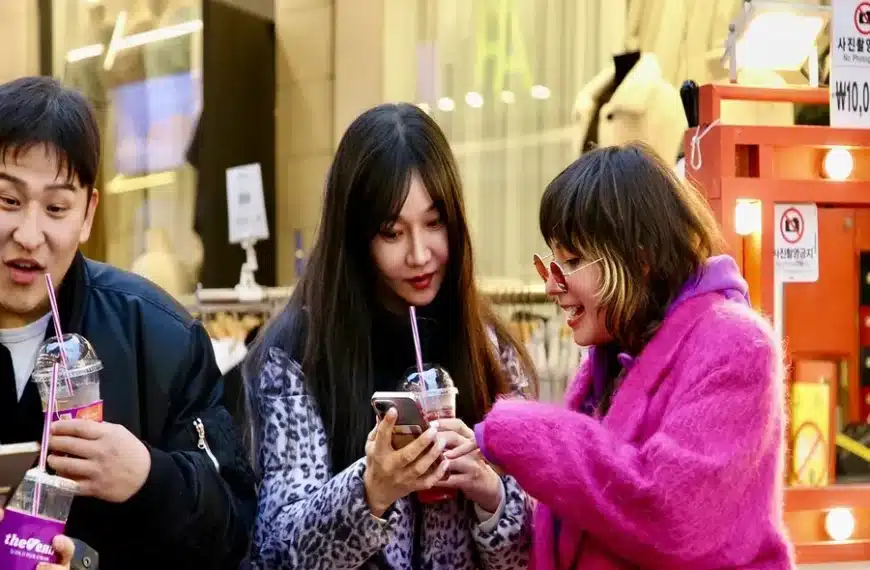Few cultural exports from South Korea have captured global attention like K-pop and K-dramas. Both forms of entertainment are closely linked to another national favorite: karaoke. Known locally as “noraebang,” karaoke is not just a leisure activity but a recurring motif in Korean film and television. Its presence on screen reinforces its cultural value while shaping how international audiences perceive Korea. For travelers who want to experience what they have seen on screen, Seoul’s Gangnam district provides the stage.
Karaoke’s Depiction in K-Dramas
Television dramas often serve as windows into Korean life. Karaoke is a staple setting in these stories, featured in emotional confrontations, comedic misunderstandings, or heartfelt bonding moments. The scenes resonate with audiences worldwide, making karaoke recognizable even for those who have never visited Korea.
These portrayals contribute to the activity’s cultural significance. Instead of being seen merely as entertainment, karaoke becomes a storytelling device that conveys relationships, struggles, and triumphs.
Movies That Highlight Korean Nightlife
Korean cinema also embraces karaoke as a backdrop. Independent films and mainstream productions alike feature the noraebang as a setting where characters reveal vulnerabilities or celebrate milestones. By using karaoke in narratives, filmmakers emphasize its role as a microcosm of social interaction.
The cinematic choice to include karaoke underscores how deeply embedded it is in urban life. Just as diners or cafés are common storytelling spaces in Western film, karaoke rooms fulfill the same function in Korea.
Storytelling Through Karaoke Scenes
On screen, karaoke is more than a room with a microphone. It symbolizes release, confession, and sometimes reconciliation. A song choice can reflect a character’s emotional state, while the act of singing can mark turning points in relationships.
Audiences interpret these moments as culturally authentic. The familiarity of karaoke in narratives makes it easier for viewers to imagine participating in the activity themselves when traveling to Korea.
Premium venues such as 역삼 풀싸롱 offer the cinematic feel of Korean nightlife, where music, storytelling, and performance merge.
Emotional Connection of Music and Visuals
The power of karaoke in film lies in the combination of music and imagery. Songs trigger emotional responses, and when paired with cinematic visuals, the effect becomes even stronger.
For international viewers, even if the lyrics are in Korean, the emotional delivery transcends language barriers. This makes karaoke a unifying element for audiences who may not share a common language but connect through shared emotions.
| Media Type | Role of Karaoke Scenes | Audience Impact |
| K-Dramas | Bonding moments, comic relief | Relatable social settings |
| Films | Emotional turning points | Deeper cultural understanding |
| Variety Shows | Celebrity participation | Reinforces karaoke as mainstream fun |
Karaoke Venues as Inspiration for Filmmakers
Many filmmakers and producers draw direct inspiration from real karaoke venues in Seoul. The neon-lit streets of Gangnam, the themed rooms, and the lively atmosphere serve as authentic backdrops for stories.
By filming or recreating these spaces, media not only documents nightlife but also promotes it. International audiences who see such settings are often motivated to seek them out when visiting Korea, linking fiction with tourism.
Tourism Fueled by Media Exposure
Media-driven tourism is a growing trend. Fans of K-dramas and films frequently visit locations featured on screen. Karaoke bars are part of this itinerary, especially in Gangnam, where media references are abundant.
Tour operators have responded by creating packages that include visits to iconic filming sites, allowing travelers to connect fiction with reality. The impact is measurable, with karaoke becoming a recognizable part of Korea’s tourism brand.
Karaoke as a Live Stage for Personal Expression
For travelers, karaoke represents the chance to live their own cinematic moment. After seeing countless characters sing out emotions on screen, tourists step into a karaoke room to create their own story. This sense of participation transforms visitors from spectators into active cultural participants.
The experience is immersive. Singing a song featured in a drama, in the same kind of setting where it was filmed, adds an extra layer of authenticity for fans.
Media Tourism and Global Curiosity
The international spread of Korean entertainment has positioned karaoke as a cultural export in its own right. Global curiosity about Korean nightlife continues to grow, with media exposure serving as the entry point. Karaoke is no longer perceived as a quirky hobby but as a central feature of urban culture worth experiencing firsthand.
| Driver of Interest | Effect on Tourism |
| K-Drama Representation | Fans visiting Seoul to “re-live” scenes |
| Film Backdrops | International recognition of nightlife settings |
| Celebrity Participation | Tourists drawn to familiar faces and locations |
Karaoke as Entertainment and Art
Karaoke’s presence in media demonstrates that it is both an entertainment form and an artistic device. It enhances storytelling while simultaneously promoting tourism. The cinematic portrayal of karaoke ensures that travelers expect it as part of their Korean itinerary.
In Gangnam, where nightlife and culture merge, karaoke remains at the center of the experience. For visitors, stepping into a karaoke room is not just an evening out – it is participation in a cultural script already familiar from screens worldwide.









